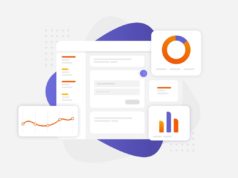
When Nordstrom and digital gift-card company CashStar rolled out Product eGifting this week, it was the latest in a series of technological offerings the upscale clothier launched this year — and a precursor of more to come.
It was also among a host of technological innovations retailers have made this year to draw and retain customers whose shopping habits are increasingly shifting online.
Product eGifting, in which customers can choose a gift from a retailer’s website to send directly via email, are among the technological features retailers have added. Shopping centers such as Alderwood mall have websites and apps that can tell customers which parking lots are full and which have spaces.
Nordstrom has made a big push in recent years into e-commerce, which now makes up more than a fifth of its sales. Earlier this year, it launched features for its mobile app, including the ability to reserve items online to try on in stores, search for items by preferred store, and identify exact or closely matching items from Nordstrom’s stock by taking a photo of an item.
It’s currently testing an app that allows sales associates to browse the online assortment, then send item and outfit recommendations to customers to purchase, said Danny Ryder, Nordstrom’s vice president of online merchandising and digital experience.
It’s also in the early stages of exploring ways customers might be able to browse for products in the store and do the checkout on their own, perhaps by using visual search and bar code scanning.
Those capabilities may or may not end up coming to fruition — but they’re examples of the way Nordstrom is thinking about its digital approach: trying to bring technology to the experience of shopping in one of its brick-and-mortar stores with their emphasis on higher-quality products and customer service.
Recipient Choices
Product eGifting fits into that as “one component of many different things that we’re trying to piece together for the overall experience,” Ryder said.
With Nordstrom eGifting, customers can choose an item from Nordstrom.com and send it immediately, along with a personal message, to the recipient via email. The recipient can then personalize the gift, choosing size and color and giving their shipping address. Or recipients can instead choose to receive a digital gift card without notifying the sender that they have chosen that option.
EGifting “takes away a lot of the pain points of finding a gift: not being 100 percent sure the person will like an item, maybe not knowing the right size or color, or not knowing their shipping address,” Ryder said.
Earlier this year, Mike Koppel, Nordstrom’s chief financial officer, said that e-commerce has grown to represent 20 percent of Nordstrom’s sales, up from 8 percent five years ago.
That number is above 20 percent now and “what we continue to feel is an acceleration towards online,” Ryder said.
Nordstrom’s digital push focuses on three main elements: its website; mobile, particularly through its app; and incorporating more of its online assortment and experiences into its brick-and-mortar stores.
The company has made behind-the-scenes improvements to its website that allow it to be more nimble, Ryder said. EGifting, for example, took four months to get from the decision to implement it to its launch. Previously, it would’ve taken 12 to 18 months, he said.
Nordstrom plans to tie its app more closely to its rewards program, which earlier this year was broadened beyond just Nordstrom cardholders, Ryder said. (Starbucks, for example, closely ties its app to its rewards program.) Nordstrom’s app already allows customers to check and redeem their rewards points. The company is now discussing whether it can use the app to, perhaps, offer rewards customers early access to brand launches or new-product launches, and access to styling advice, Ryder said.
In its stores, it’s looking at ways it can let customers know about the broader array of items it carries online, whether that’s through installations of screens or through customers’ smartphone app.
For some categories such as tableware, which Nordstrom doesn’t carry a broad assortment of, the stores essentially still act as showrooms, directing customers to their apps to make purchases, Ryder said.
With all the initiatives, “what we’re going to see is a blurring of the online and the physical” to try to raise sales both in-store and online, he said.
Parking Features
General Growth Properties, which operates malls across the country, including Alderwood mall in Lynnwood, has also been on a technological push.
It’s been piloting a parking feature on its website and GGP Malls app, officially launching that feature for Alderwood mall and a number of other shopping centers last month.
That feature allows customers to pull up a map of the mall to see at any given time which lots are full (shaded in red), almost full (yellow) or have lots of spaces (green). It also makes predictions for parking availability for future dates and times, based on historical data. GGP uses data from Inrix, the Kirkland-based traffic-data and automobile-technology company.
This year, GGP has focused on how to improve its overall experience at its malls nationwide and realized that “parking was a pain point” for many, said Scott Morey, executive vice president at GGP who’s in charge of its technological initiatives.
The company also added to its app the ability to find your car in the mall parking lot by using a “reminder” feature that drops a pin on a map using the smartphone’s GPS location.
And GGP last month launched on both its app and website the ability to search mallwide for either a product or a brand and see which stores carry it. That exists for both Alderwood mall and Westlake Center, which GGP also operates. (The parking-lot feature doesn’t work for Westlake Center since that shopping center has no open-surface lots.)
“We’re trying to make it really easy for people to find what they’re looking for,” Morey said.
© 2016 Seattle Times under contract with NewsEdge. -.







